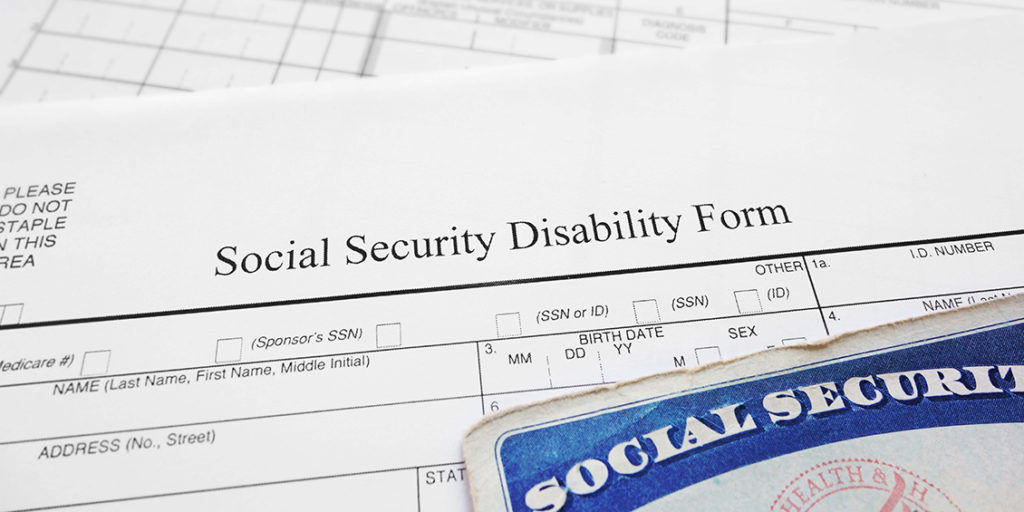
Pemphigus and pemphigoid are a group of rare autoimmune diseases that affect the skin and mucous membranes causing painful blistering and scarring. For some patients, the noticeable and sometimes life-threatening, symptoms are too much to work with. The Social Security Administration’s (SSA) disability benefit programs are for patients like those who can’t support themselves because of their disability.
Social Security Disability
If you cannot work enough to earn the SSA’s monthly Substantial Gainful Activity (SGA) limit of $1,130, then you may be eligible for Social Security Disability Insurance (SSDI). Generally, you need to have worked five of the last ten years in a job that pays into Social Security, and additional years depending on your age. Benefits average $1,000-$1,500 each month, but the SSA calculates your payment by averaging your previously reported income, so it may be higher or lower.
After you are approved, you will not receive your first check until five months after the date your pemphigus or pemphigoid started, or your reported onset date. Be aware the SSA may take up to two years to approve the claim; however, you will be given any back pay in a lump sum check. Two years after your reported onset date, you will be eligible for Medicare.
Supplementary Security Insurance (SSI) is not paid from taxes, so it is best for those with little or no work history, or parents applying for children. In most states, you will also be automatically enrolled in Medicaid once approved for SSI. You are allowed to work while on SSI, but individuals cannot earn more than $733 a month in countable income, and couples cannot earn more than $1,100 ($1,100 is the total countable income limit for a couple with SSI, if an SSI-eligible individual is married to someone who is not eligible, then the SSA does a process called “deeming” where they factor in the ineligible spouse’s income and resources to determine payment amounts.). Individuals and couples also cannot have more than $2,000 and $3,000 worth of assets. If a person/couple owns a home, that home is not counted toward their income or resources as long as it is their primary residence.
Requirements for Pemphigus and Pemphigoid
The SSA evaluates all applications they receive first with the Blue Book, their official list of impairments and medical requirements. If you meet or equal a condition in the Blue Book, you will be automatically medically eligible for benefits This means that an individual can qualify for benefits based off of their condition, but the decision is ultimately up to a disability examiner, so an individual may have to file an appeal if the examiner denies their application. .
Pemphigus and pemphigoid can be found in Section 8.00—Skin Disorders of the Blue Book. You need to provide medical evidence of the following:
- Bullous disease (pemphigus, bullous pemphigoid), with extensive skin lesions that persist for at least three months despite continuing treatment as prescribed;
- Chronic infections of the skin or mucous membranes, with extensive tissue death or extensive ulcerating skin lesions that persist for at least three months despite continuing treatment as prescribed.
If you do not meet a Blue Book listing but feel your conditions restricts you from performing SGA, you may still be approved with a medical-vocational allowance based on your limitations. Applicants do not need to do anything for a medical-vocational allowance. The medical-vocational allowance is a determination made by the SSA during the application process after they determine that someone is not medically eligible by the Blue Book criteria. This determination takes into account a person’s ability to do the work they have been doing, whether they would be able to be re-trained for another job, whether they can perform any type of work that they’ve done in the last 15 years among other factors.
Applying for Social Security Disability
Talk to your doctor before completing the SSI application. Because the claim can take so long to process, be reviewed, and a determination made, it may not be worth applying if your doctor does not think your chances are good enough. If you do decide to apply, a detailed statement from your doctor about the limitations caused by your pemphigus or pemphigoid is crucial to the claim.
The SSA offers a convenient application on their website for SSDI. SSDI is Social Security Disability Insurance – meaning that it is based off of your work history and income, and its premiums are paid with payroll taxes. SSI is a needs based program and because of that has income limits, restrictions on resources, and a lower maximum benefit amount. If you’re not comfortable applying online or you are applying for SSI, you will need to make an appointment at your local SSA office. You can find a list of documents (such tax information and a birth certificate) you will need, in addition to important medical evidence (labs, imaging tests, and surgical reports) on the SSA’s website.
